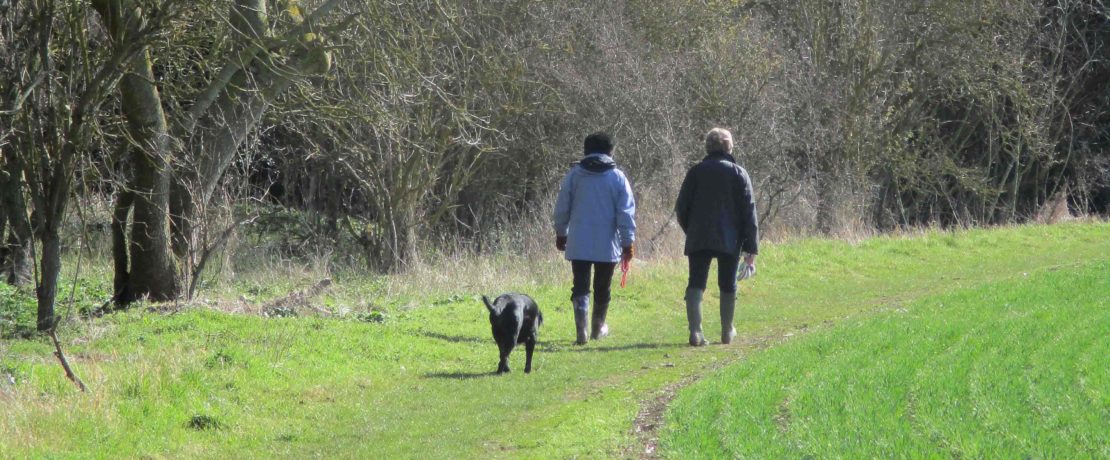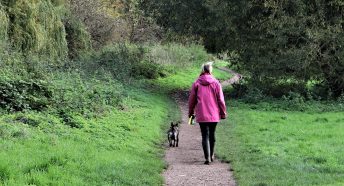How local communities can protect their valued green spaces
We present a brief guide to four specific land designations: Local Green Spaces, Assets of Community Value, Village Greens, and Local Nature Reserves.
It is widely recognised that connection to nature is important for physical and mental health and the availability of green spaces is essential in built-up areas to offset the effects of climate change. How can communities ensure that green spaces are preserved for future generations? Can enduring protections be put into place?
An array of land protection designations
Land protection operates at local, regional, national, and international levels. Nature sites and areas of countryside can be given a special status as protected areas because of their natural and cultural importance by local councils or organisations such as Natural England.
Here at CPRE Hertfordshire we often receive questions about the different designations that may be available for village greens, community recreation grounds, local nature reserves, and similar. But what do different designations mean legally under planning policy? What are the implications of one form of designation versus another? And how can local communities achieve one of these designations?
We will try to answer some of these questions here.
– – –
Local Green Spaces
Local Green Space is a formal land designation first introduced in the National Planning Policy Framework in 2012. This designation can only be made through the Local Plan or Neighbourhood Plan process and affords designated land the same protection from unwarranted and inappropriate development as Green Belts. This makes the Local Green Space designation a powerful tool in land use planning.
In early 2022 we published our research into Local Green Spaces. Our research shows that just over 80% of Local Green Spaces have been designated at least in part due to their recreational value and by protecting the recreational value of these spaces under the Local Green Space designation, many local communities also seek to secure their social value.
Our report shows that more than a third of Local Green Spaces have been designated at least in part due to their wildlife and biodiversity, close to a third due to their landscape beauty and a quarter due to their historic significance or their tranquillity.
Read the full report to find out more about Local Green Spaces all across England.
Examples of Local Green Spaces in Hertfordshire
As of February 2022, there were seventy-seven designated Local Green Spaces in Hertfordshire, which equates to five Local Green Spaces per 100,000 people. Most of these designated Local Green Spaces are not open countryside, but the small, undeveloped patches that provide people with a daily dose of nature, close to where they live. Examples of Local Green Spaces are the ‘Green Fingers’ in Hertford and ‘Green Wedges’ in Bishops Stortford identified in the East Hertfordshire District Local Plan adopted in 2018.
Hertfordshire currently has fewer designated Local Green Spaces than two thirds of other Local Authorities across England, so we know there is considerable scope for greater take-up. In particular, there is an excellent opportunity for achieving more Local Green Space designations in those districts where preparation of a new Local Plan is underway, such as Dacorum, Hertsmere, St Albans, and Three Rivers.
Districts that are due to review their adopted Local Plan, such as both East Hertfordshire and North Hertfordshire in 2023, should also include new Local Green Space designations as part of the review process.
Applying for the Local Green Space designation
The relevant authority for approval of Local Green Space is the local planning authority, i.e. the district or borough council. Parish and town councils can initiate the process, and Local Green Spaces can be formalised in Neighbourhood Plans as well as Local Plans.
Eligibility criteria
Local Green Spaces must be demonstrably special to their local communities because of their beauty, historic significance, recreational value, tranquillity, or richness of wildlife. Local Green Spaces might also be community gardens, orchards, fields popular with dog walkers, and recreation grounds. All new residential areas should include green areas that were planned as part of the development and these may be formally designated as Local Green Spaces. It’s important that Local Green Spaces are close to the communities they serve, preferably within easy walking distance.
– – –
Assets of Community Value
The Localism Act 2011 requires local authorities to maintain a list of Assets of Community Value which have been nominated by the local community. When listed assets come up for sale or change of ownership, the Act then gives community groups the time to raise money to bid for the asset. This is intended to help local communities keep much-loved sites in public use and part of local life.
A building or land can be designated as an Asset of Community Value if its main use is (or has recently been) to further the social wellbeing or social interests of the local community and could do so in the future. The Localism Act states that ‘social interests’ include cultural, recreational, and sporting activities.
One of the main benefits of the Asset of Community Value designation is to give the local community the right to bid, if the owner of the property decides to sell.
Examples of Assets of Community Value in Hertfordshire
Each district or borough council should maintain a list of Assets of Community Value. For example, in North Hertfordshire the list includes green spaces such as a part of Therfield Heath in Royston, Great Wymondley Garden Plots in Hitchin, Kimpton Allotments in Kimpton, and land at Knebworth Recreation Ground.
Applying for Assets of Community Value designation
As with Local Green Spaces, the relevant authority for approval of the Assets of Communities Values designation is the district or borough council. Local community organisations including parish councils, neighbourhood forums, community groups of at least twenty-one members, and not-for-private-profit organisations can nominate land and buildings for the Asset of Community Value designation.
After successful application, an Asset of Community Value is listed by the local authority for five years. At the end of the five-year period, any Asset of Community Value is de-listed, and another application must be made for a new five-year period of listing.
Eligibility criteria
The types of property that can be listed include pubs, shops, community facilities, libraries, swimming pools, village shops, markets, and areas of open space. A Local Green Space can be registered as an Asset of Community Value which would then give community interest groups an opportunity to bid if the owner wants to dispose of the land.
– – –
Village Greens
A Village Green can be any land on which a considerable number of people have engaged in recreational activity. Greens arose from the old manorial system and, through custom, became the area of the village where local villagers indulged in ‘lawful sport and pastimes’. Like other customary rights, the courts started to recognise and protect these areas and the rights of people to use them for recreation (one of the earliest cases dates from 1665).
Many of today’s town and Village Greens were registered in the late 1960s under the Commons Registration Act 1965.
Examples of Village Greens in Hertfordshire
Village Greens exist in many hamlets, villages and towns all across Hertfordshire.
We are involved in the ongoing campaign to fight deregistration of Woodcock Hill Village Green in Hertsmere borough. The site was designated a Village Green in 2008 and is managed as a vital nature reserve, open space, and an asset for the whole community to enjoy. Managed, funded, and maintained by volunteers, this 24-acre site is home to the last area of semi-natural habitat in Borehamwood.
An example of a currently pending application for Village Green designation is Singlers Marsh in Welwyn. Welwyn Planning and Amenity Group (WPAG) is leading the effort to protect this local wildlife site and nature reserve by having it designated as a Village Green.
Applying for the Village Green Designation
The relevant authority for approval of the Village Green designation is Hertfordshire County Council (HCC). Detailed guidance and application forms are available on HCC’s website.
Eligibility criteria
To register a piece of land as a Village Green, evidence of twenty years of public use (for lawful sports and pastimes) is needed.
– – –
Local Nature Reserves
Local Nature Reserves are places with wildlife or geological features that are of special interest locally. These can be ancient woodlands, meadows, chalk streams and their habitats or other wetlands, or almost any area where distinctive or threatened species are found.
Examples of Local Nature Reserves in Hertfordshire
There are many Local Nature Reserves in Hertfordshire. They include Oughtenhead Common Nature Reserve in North Hertfordshire, Colney Heath Nature Reserve in St Albans District, Northaw Great Wood in Welwyn Hatfield Borough, and Cassiobury Park Local Nature Reserve in Watford.
Applying for the Local Nature Reserve designation
The relevant authorities for approval of the Local Nature Reserve designation are county, district and borough councils who must consult with Natural England. Town and parish councils may be able to approve Local Nature Reserves if the district council has given them the power to do this.
Eligibility criteria
The site should be locally important for wildlife and/or geology, and should be available to the public for education and enjoyment without disturbing wildlife. Brownfield land, historic cemeteries, agricultural land, and orchards, as well as commons and other accessible green spaces can become designated as Local Nature Reserves if they have wildlife or geological interest.
The management plan for a Local Nature Reserve must include protecting its natural features and maintaining its accessibility for the public.
Natural England has produced a useful reference guide with more information: Local Nature Reserves in England: A guide to their selection and declaration
– – –
What next?
At CPRE Hertfordshire our mission is to protect and promote the beautiful Hertfordshire countryside for everyone’s benefit. As part of this, we want more local communities to be able to protect their local green spaces from inappropriate development. We regularly provide advice to our members in this regard.
If you would like to find out more or get involved, please join us. We are a membership charity, and it is easy and quick to join online.






